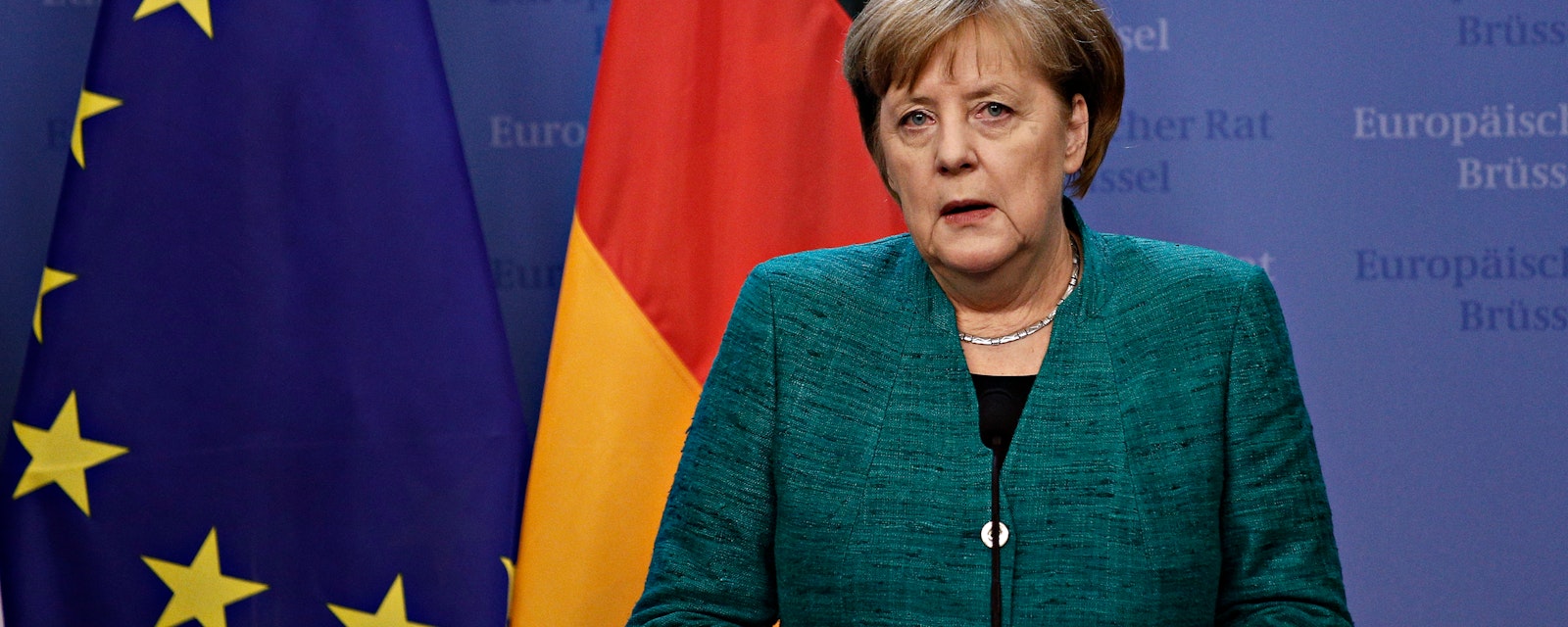Chancellor Angela Merkel’s decision not to run again for the leadership of her Christian Democratic Union (CDU) has further fuelled speculation about the end of her chancellorship.
As discussed, Merkel’s retreat from the helm of her party is intended to preserve her top job in government until 2021. Whether she succeeds will depend on two factors: the outcome of the CDU leadership race and – largely neglected so far – the procedures and politics of ousting a chancellor.
Interest in German politics has increased dramatically since the outbreak of the Eurozone crisis. As Merkel was already in power back then, the decline and end of a chancellorship is a relatively new topic for many Germany watchers. The question is how a chancellor could be ousted, against her will. Two aspects need to be taken into account: procedures and politics, as well as the way they have historically played out in real-world politics.
Three (plus two) ways of ousting a chancellor
Unlike in the UK, a resignation from the party leadership does not necessarily mean the end of a chancellorship. In procedural terms, there are three ways of losing the top government job:
- Electoral defeat: a chancellor runs in an election, but their party fails to become the strongest force, and/or their envisaged coalition lacks a Bundestag majority.
- Resignation: A chancellor informs the federal president of their decision to step down. The president must comply and formally dismiss the chancellor.
- Constructive vote of no-confidence: This German specialty is intended to prevent a vacuum at the top-level of democratically-elected government. The Bundestag can only oust a chancellor by electing a successor at the same time.
Whether and how these procedures materialize depends on the underlying politics. Forced resignations or a constructive vote of no confidence have historically occurred for one of the following reasons:
- Coalition crisis: The coalition partner pulls back their ministers and heads for the opposition benches, or they switch sides and form a new coalition with an opposition party.
- Party rebellion: A Bundestag party group or party conference vote calls on the chancellor to go. Politically, this leaves the head of government with no other choice but to resign.
Historical precedent
A quick look at how Merkel’s seven predecessors have lost office provides a better idea of how procedural rules and political factors tend to interact towards the end of a chancellorship:
- Gerhard Schroeder (2005): Defeat in snap polls. Continuously losing support for his unpopular economic reform agenda, the chancellor provoked early elections. After a fulminant Schroeder campaign, the CDU won by only one percentage point, but this was enough for Merkel to replace Schroeder by forming a grand coalition.
- Helmut Kohl (1998): Defeat in general elections. Despite Wolfgang Schaeuble’s hopes for Kohl to hand over the chancellorship before the 1998 polls, Kohl decided to run again, aiming for 20 years at the chancellery. Voters opted for change, however, and Kohl lost in a landslide to Schroeder’s red-green alliance.
- Helmut Schmidt (1982): Constructive vote of no-confidence. After 13 years by the side of the SPD, the liberal FDP decided to change sides. Its ministers resigned from Schmidt’s cabinet, and Kohl negotiated a CDU-FDP deal to replace Schmidt in a constructive no-confidence vote. Kohl subsequently engineered (and won) snap polls in 1983.
- Willy Brandt (1974): Resignation. Two years after Peace Nobel Prize laureate Brandt had won a landslide for the SPD, it became clear that one of his advisors was spying for the East German intelligence service. Fearing revelations about his private life, the chancellor resigned, and the socio-liberal coalition elected Schmidt as his successor.
- Kurt-Georg Kiesinger (1969): General election losses. Though modestly, the CDU weakened while the SPD continued to gain momentum after three grand-coalition years. The FDP sided with the SPD, electing Brandt as the first social-democratic chancellor after the war.
- Ludwig Erhard (1966): Resignation. Amid a standoff over tax hikes, the FDP ministers resigned from the cabinet, ending the coalition. Erhard resigned once Kiesinger had negotiated a grand coalition with the SPD as junior partners – and him as chancellor.
- Konrad Adenauer (1963): Resignation. Aged 87 and after 14 years in office, Germany’s first post-war chancellor was weakened by political scandals and a growing desire for change. Yet the patriarch refused to exit, eager to prevent Erhard from succeeding him. CDU Bundestag MPs eventually held an internal vote against Adenauer and for Erhard, leaving the chancellor with no other option but to resign.
Implications for Merkel’s departure
Neither electoral defeat nor a constructive vote of no-confidence are in the cards for Merkel: unlike in the past, where SPD, Greens and the Left would have had the numbers, there is no alternative majority in the Bundestag. The CDU would have to force Merkel to resign, as with Adenauer 55 years ago. There is one key difference, however. Adenauer had tried to divide his challengers, only to find that they had already assembled behind Erhard (and even then, the eventual vote among Bundestag MPs was very close).
Today, the CDU is split between liberal Merkelians and traditional conservatives. This is precisely what Merkel might be betting on. If on top of this, her confidante Annegret Kramp-Karrenbauer (AKK) takes over the party, and not Merkel’s conservative foes Jens Spahn or Friedrich Merz, this might improve her chances of bringing her chancellorship to an orderly end.




